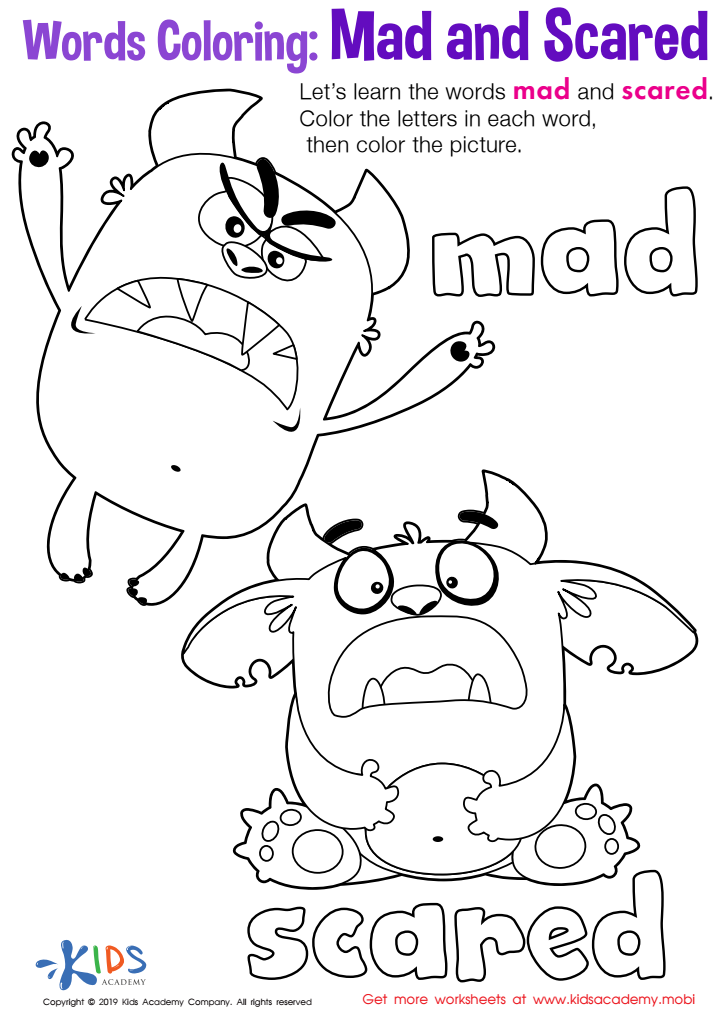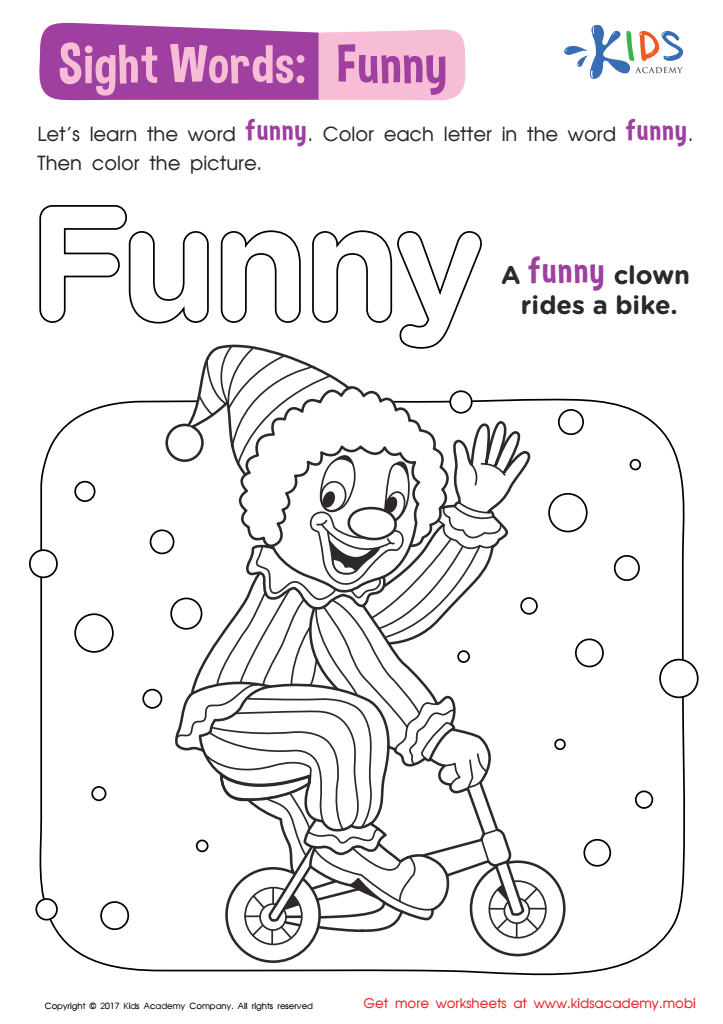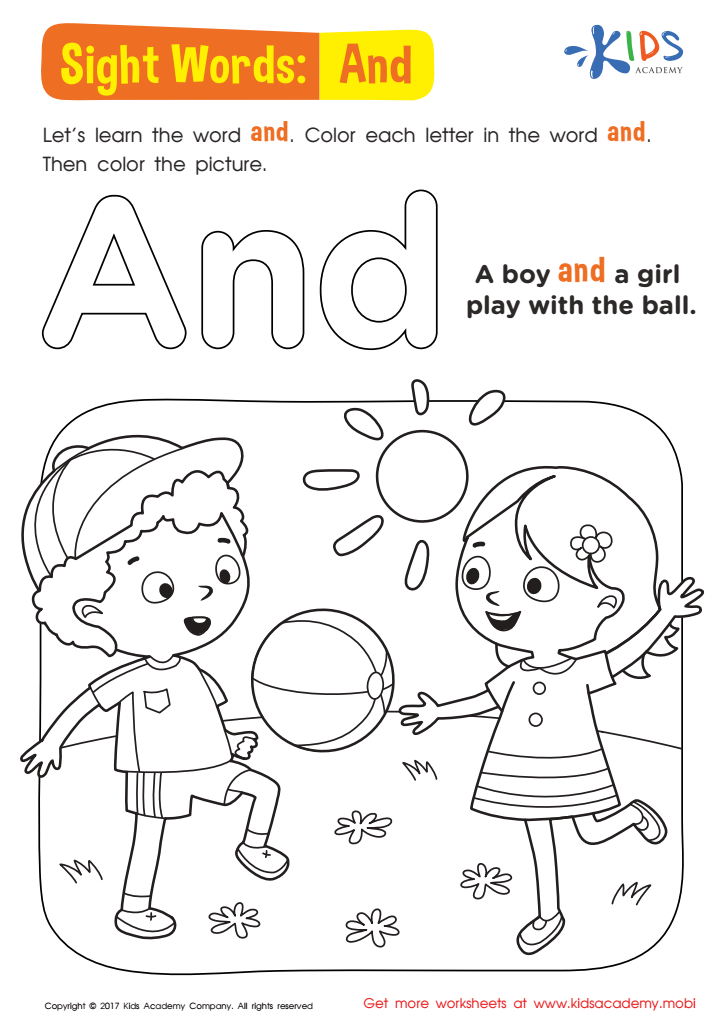Reading comprehension Building Vocabulary Coloring Pages Worksheets for Ages 6-9
4 filtered results
-
From - To
Unlock your child's potential with our "Reading Comprehension Building Vocabulary Coloring Pages Worksheets" designed for ages 6-9! These interactive worksheets blend learning and creativity, making vocabulary building fun and engaging. Kids will enhance their reading skills while enjoying colorful illustrations that reinforce concepts. Each page is carefully crafted to stimulate critical thinking and comprehension, ensuring a comprehensive learning experience. Perfect for home or classroom use, these resources encourage independent learning and support early literacy development. Watch your young learners flourish as they connect words with imagery and broaden their vocabulary in an enjoyable way. Foster a love for reading today!


Mad and Scared Words Coloring Worksheet


Funny Worksheet Sight Words Worksheet


Long and Short E Worksheet


And Worksheet Sight Words Worksheet
Reading comprehension and vocabulary development are foundational skills essential for young learners, and incorporating engaging resources like coloring pages can be a powerful tool in this process for children ages 6-9. Parents and teachers should prioritize these activities as they address cognitive and emotional growth simultaneously.
Coloring pages specifically designed around stories, vocabulary words, or themes can create a fun, interactive way to deepen understanding. As children color, they often engage in discussions about the content, reinforcing comprehension and retention. This active involvement helps them make connections between words and their meanings, enhancing vocabulary in a natural, enjoyable manner.
Additionally, these activities cater to various learning styles. Visual learners benefit from the combination of art and textual content, while kinesthetic learners engage through the physical act of coloring. Regular practice reinforces language structures and expands children's word banks, crucial for effective communication and academic success.
Moreover, creating or discussing coloring pages fosters a bond between parents, teachers, and children, sparking curiosity and motivation. Investing time in reading comprehension and vocabulary-enhancing tools ultimately equips children with the skills necessary for lifelong learning. Thus, the integration of coloring pages is not just playful, but a strategic approach to literacy education.
 Assign to My Students
Assign to My Students











